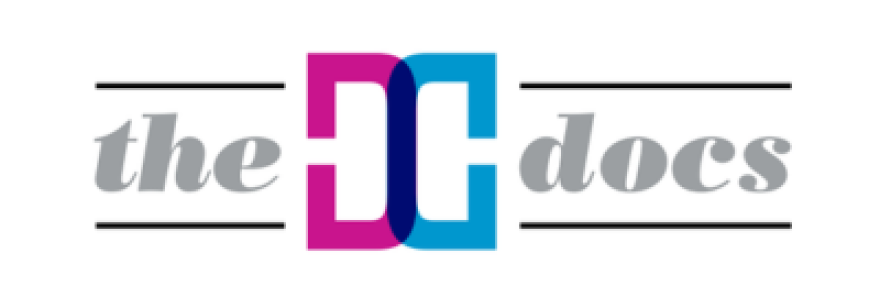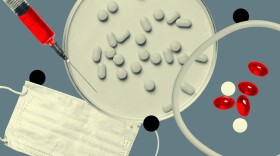Can Southern Nevada become a medical tourism destination? Judging by these specialists attracting patients from far and wide, we’re on our way.
In the post-recession search for a more diverse — and thus secure — local economy, Las Vegas leaders have set their sights on medical tourism. With the city’s nation-leading convention and visitors bureau putting heads on beds at impressive rates, along with its well-established street cred as an accessible, affordable destination, adding “medical” to existing leisure and convention tourism seems like a natural move.
Except for one thing: The Las Vegas health care community’s national reputation isn’t on par with those of its convention or culinary or entertainment industries. And that’s putting it nicely. But we’re not necessarily alone. Medical tourism is fairly new territory for an American city. According to Patients Beyond Borders, the U.S. isn’t in the top 10 destinations people travel to for medical treatment. It falls, instead, into the category of “destinations starting to get attention,” along with China, Puerto Rico and the United Arab Emirates. Doug Geinzer, CEO of the Southern Nevada Medical Industry Coalition, says a handful of U.S. cities — Cleveland, Houston, Miami — have found success targeting specific markets that are nearby or have high demand for the specialties in which they excel.
But why, some people might wonder, would anyone come to Las Vegas for medical treatment when even locals joke that the best place to go for good care is McCarran International Airport?
As it happens, there are people here who can answer that question, and they’re not pitchmen or pundits. They’re specialists who offer treatments, use equipment or simply have knowledge in their heads that is so rare — and so good — they already attract travelers from far and wide to Las Vegas.
“When you look at the influx of medical institutions that are affiliating here — Cleveland Clinic, Stanford, UCLA, UCSD — they’re doing so because we have a good size population, but also because we have 40 million people who travel through here,” says Geinzer. “Medical tourism is going gangbusters because people are willing to travel for good care.”
Geinzer’s group is working with the Las Vegas Convention and Visitors Authority to compile a list of local medical centers of excellence. Essentially a directory of high-quality specialty care, it would serve to draw patients to the city for extended stays that bundle treatment with travel packages.
Geinzer says the list won’t be complete until later this year. Compiling a credible information source is no easy task, he adds. First, a complex algorithm will cull providers of top-notch care from all local licensed practitioners by looking at outcomes, training and other factors. Then, the short list will be stacked up against leading providers in their fields nationally.
Some trends have already begun to emerge. It’s apparent to Geinzer, for instance, that Las Vegas excels in bariatrics, dental implants, fertility, orthopedics and plastic surgery. He likes the idea of promoting practices in these fields because, he says, the anonymity that patients of such procedures often prefer is a natural fit with the Las Vegas ethos. (All together now: “What happens in Vegas …”)
Talk directly to physicians in these fields, as well as in other specialties that serve outsiders, and you get a sense of what it will take beyond good marketing in order for medical tourism to succeed. Surprisingly, it boils down to some pretty basic concepts: Fill a niche, be the best at it, keep getting better — and connect with the community.
Tip 1: Fill a niche
William N. Evans, M.D., FACC, FAAP and Gary A. Mayman, M.D., FACC
Children’s Heart Center of Nevada
Children’s Heart Center surgeons perform a hybrid procedure that combines cardiac surgery with catheterization on babies who are born lacking a pumping chamber in their hearts. The condition used to be a death sentence, Evans says, but this procedure saves almost all who undergo it. Subsequent surgeries over succeeding months further improve heart function.
Evans and Mayman are pediatric cardiologists who see patients and direct the center, but they don’t perform the hybrid procedure themselves. Rather, they’ve brought together interventionists (to do the catheterization) and surgeons — along with radiologists, psychologists, social workers and a host of others — who perform the procedure, then follow each patient and his or her family through the process. The group meets weekly to discuss ongoing cases.
“To have the kind of team we have is rare,” Evans says.
According Evans and Mayman, only a handful of places in the country offer the hybrid procedure, and virtually nowhere outside Children’s Heart Center performs it on the West Coast. They estimate some 20 percent of their patients come from outside Nevada, and many of those are from Idaho. Although independent, they have agreements to operate on patients in every hospital in Las Vegas.
In the five years the center has offered the hybrid procedure, it has performed it on more than 50 children. With so many cases under their belt, Evans and Mayman say they’ve collected enough data to write an article that they hope to have published in a medical journal by year’s end.
Although fame helps spread the word about what the center does, it’s not their main motivation or reward.
“The greatest feeling is to see a newborn who’s very, very sick and, over a period of time — it may take a month or two — they get better,” Mayman says. “Then, in two or three years, you see them running around your office. It’s incredible.”

Answers from our Health and Medicine Steering Committee*
We asked:
“What are some positive aspects or promising developments in Southern Nevada health care worth noting?”
They said:
“It’s great to see that the Las Vegas Convention and Visitors Authority is focusing on promoting medical tourism. You truly can get the highest level of care at a destination spot such as Las Vegas. I’ve always known that the private practices in Las Vegas have some of the best doctors in the nation, and this new initiative will help bring this to light in other cities.” — Dr. James D. Atkinson, Medical director, Surgical Weight Control Center of Las Vegas
“Physicians at Comprehensive Cancer Centers of Nevada have created a cancer clinical trial powerhouse without the help of a medical school or university. We have almost 30 on staff employed to do strictly cancer research and placed 309 patients on clinical trials in 2011. We are on track to reach over 400 in 2012. ... We have over 170 trials open and virtually all of the CCCN docs participate. We have phase one trials of the newest drugs. Patients are coming for such trials from across the U.S. Many times, we are able to obtain free drugs. In the last two years, major pharmaceutical companies have been coming to us asking our assistance in conducting their trials, rather than going overseas to find patients.” — Dr. Nicholas J. Vogelzang, Comprehensive Cancer Centers of Nevada
“In an emergency, Las Vegas has one of the best trauma units in the nation, with a fellowship program of advanced training in trauma at UMC. For emergency situations, I feel Las Vegas is completely equipped.” — Dr. Sean David Palacios, neuro-otologic surgeon
“MGM Resorts’ new Direct Care Plan incorporating the principles of the Patient Centered Medical Home. It’s a good start.” — Dr. Keith Boman, cardiologist
*We surveyed a hand-picked group of local doctors and health care professionals on a variety of health care topics. We share some of their answers here.
Tip 2: Be the best at what you do
James D. Atkinson, M.D., FACS
Surgical Weight Control Center of Las Vegas
Atkinson takes pride in the Surgical Weight Control Center of Las Vegas’ designation as a center of excellence by the American Society for Metabolic and Bariatric Surgery. A bariatric surgeon for a dozen years, he and partner Darren Soong, also a bariatric surgeon, have worked hard to achieve the outcomes that caused Health Grades to rank the center at the top of its field in Nevada in 2007.
The center touts itself as having performed more gastric band and gastric bypass surgeries than all other bariatric practices in Nevada combined, and having trained more than 100 surgeons from around the country.
“Nobody can say, ‘We’re the very best,’ but there are groups at the highest level, and then tiers below that,” Atkinson says. “We’re certainly in that highest level.”
Atkinson says people are often surprised to hear this about a private, stand-alone practice that isn’t affiliated with a large university health system. When you’re in need of specialty care, you think of places like Stanford or UCLA, he says, but while those large teaching hospitals are great for research and rare diseases, private practices often outperform them when it comes to more standard medical procedures, such as joint replacements and plastic surgery.
Bariatric surgeons are also lacking outside large, metropolitan areas, according to Atkinson. When you’re a leader in your field, people from rural areas and small towns who don’t have specialists in that field find you.
“I think the leaders looking at (medical tourism) need to be very sure about the physicians they team with,” he says. “There’s not the same level of care in every practice or every specialty. They need to align themselves with the ones that are at the highest level.”
Tip 3: Keep getting better
Waldo Feng, M.D., Ph.D.
Children’s Urology Associates
In Feng’s case, it’s not the specialty procedures he performs so much as how he performs them that make him stand out. Or, rather, what he performs them with: the da Vinci Surgical System — or, as Feng call it, “the robot.”
Feng sits in front of a large machine, peering into a screen displaying a live, magnified image and controlling the movements of highly sensitive robotic arms that do the actual surgery.
Nearly every hospital in Las Vegas has such a robot, he says, and they’re used to do all kinds of surgeries — from hysterectomies to prostatectomies. Few people in the country, however, use the da Vinci for two procedures Feng does: extrauretral reimplantation and pediatric pyeloplasty.
These surgeries focus on correcting malformations in the bladder and ureter, which carries urine from the kidney to the bladder. Surgeons have been doing them on children for many decades, but until recently had to make relatively large incisions to get their adult hands inside the infant-sized abdomens. Minimally invasive, laparoscopic surgery reduces the amount of bleeding and scarring, and patients usually recover from it more quickly than from open surgery.
Besides using the robot on patients from California and all over Nevada, Fengs says, he’s hosted several surgeons from around the U.S., who come to learn how he uses it for his specialty.
Why did he make the move to robotics, which has made him so sought-after?
“I’ve always been interested in new techniques, and I like technology,” Feng says. “But I really feel this is where surgery is going. … I thought, ‘We’ve been doing (extrauretral reimplantation) the same way for 70 years. Can’t we do it better?’”
Tip 4: Connect with the community
Ryan Walsh, M.D. Ph.D.
Cleveland Clinic Lou Ruvo Center for Brain Health
The Huntington’s Disease Comprehensive Clinic at the Lou Ruvo Center for Brain Health epitomizes collaboration.
The bimonthly, one-day clinic, launched in February of this year, allows patients to stay in one visitation room while a team of specialists trained to treat various aspects of the disease rotate in and out, making a thorough exam over the course of up to four hours. The team includes a neurologist — Walsh, who is also director of the clinic — along with a psychiatrist, neuropsychologist and three physical therapists.
While patients are being examined, family members and other loved ones can take advantage of education and services for caregivers of people with Huntington’s Disease.
Walsh says the approach aims to treat not only the whole patient, but also the whole family. It’s a valuable gift to people with Huntington’s, a genetic disease that tends to strike people during their most productive years, both in terms of family and finances — meaning it has strong emotional, mental and familial implications, besides disrupting normal movement.
“It affects your ability to work,” Walsh says. “You start behaving differently. You may get depressed, divorced. … The clinic addresses that whole constellation of issues in a coordinated way.”
A spokesperson for the Lou Ruvo Center says the clinic was not intended to attract medical tourists, but Walsh notes that a couple out-of-towners have been to it anyway, likely due to its comprehensive nature. Why schedule four different appointments, when you can see four specialists in one visit?
Walsh is interested in helping as many people as possible — regardless of where they come from. To that end, he’s cultivating relationships with regional doctors, who may be seeing patients for other reasons but need to refer them to the clinic for the services offered there.
He says such community-building happens not only by contacting other providers directly, but also by hosting public events, speaking at symposia and making sure the clinic is listed with national associations and referral centers.
“There are wide-ranging distances between people here, and not a lot of sub-specialty care,” he says. “We’re aggressive about identifying physicians within a certain radius and making them aware that we’re here.”









